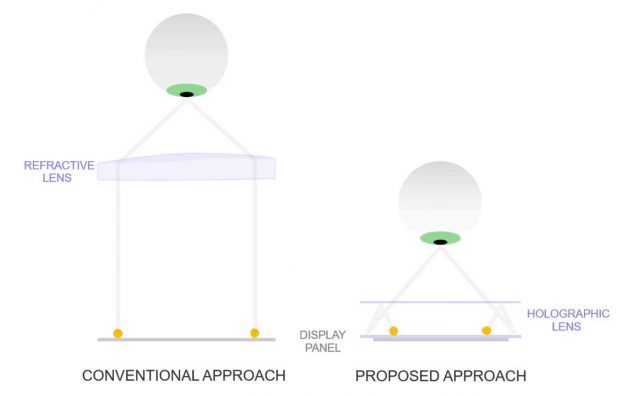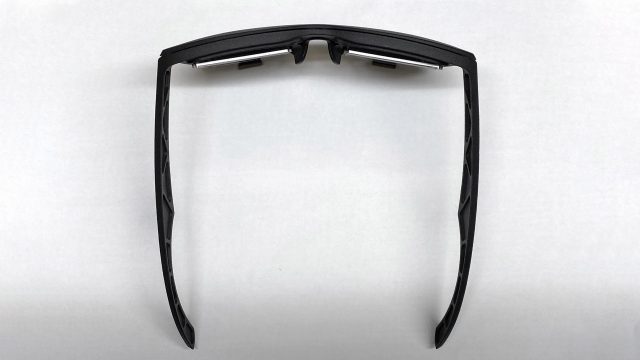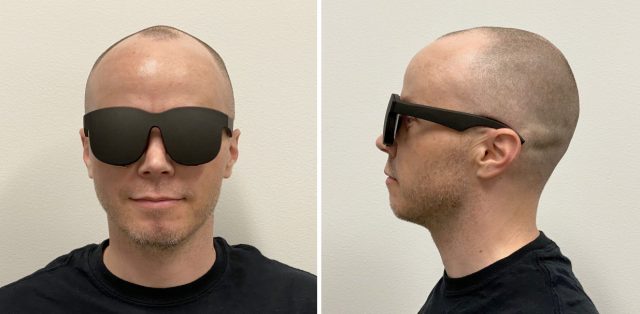Bringing it All Together

So, we learned about folded optics and we learned about holographic lenses. And now the phrase ‘folded holographic optics’ hopefully sounds a bit less like technical mumbo-jumbo.
The whole goal of this approach is to enable truly glasses-sized VR displays. Even in this proof-of-concept stage, the researchers have already demonstrated a headset equipped with such displays that could really be called ‘glassed-sized’ even more fairly than ‘goggles’. And they say it achieves the “resolution and FOV of a modern VR headset.”

It’s important to note though that the sleek headset pictured does not include critical components necessary for a real product. In order to focus squarely on the heart of their research (the optics), they left out things that would normally be inside the headset, like the light source (laser in this case), driving electronics, tracking cameras, etc. Among the design’s limitations, the researchers “acknowledge size reduction challenges when integrating light sources into the glasses, as current laser modules tend to be larger than commonly used LED sources.”
With further R&D, the researchers say, folded holographic optics could be a practical approach to making compact VR headsets that offer a wide field of view, very large color gamut, and perhaps even retinal resolution.
Which makes us wonder…
When Will We See This Technology in a Headset?

My guess is not for another 10 years at least. Although the research demonstrates some really compelling possibilities, there’s still much work to be done before this technology leaves the labs. As such, the researchers explored the limitations of their present design.
First, they have yet to demonstrate a full-color version of their work in the glasses-sized form-factor (though they did demonstrate full-color in a proof-of-concept that was not head-worn).

Another issue is the eye-box of the optics (the volume of space where your eye can actually see the image). The proof-of-concept demonstration had an eye-box of 8 mm, but it will need at least 10–12 mm to make a “practical [stereoscopic] headset,” the researchers say.
Further, the researchers note that while the technology is likely to support retina resolution, much higher resolution displays will still need to become widely available. That and a calibration protocol will need to be developed to improve “geometric uniformity, intensity uniformity, color uniformity, and color alignment.”
And then there’s the whole matter of being able to build the rest of the components into such a small form factor. The researchers envision a standalone Quest-like VR headset with everything on-board for the complete VR experience with no tether.
“Our prototypes were monoscopic and used external light sources and display drivers. A truly portable and practical display would integrate a pair of display modules, a computing platform, batteries, positional trackers, and all external components into a sunglasses-like frame.”
So it’s going to be a while before this tech makes it out of the lab, and that’s only if a better solution isn’t found by then. Still, this is a very exciting proof-of-concept, primarily because of the combination of form-factor, resolution, field of view, and color gamut.
If you really want to take a technical deep dive, check out the full research paper titled Holographic Optics for Thin and Lightweight Virtual Reality.






